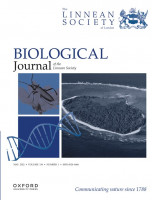“Despite reports of sexual dimorphism in extinct taxa, such claims in non-avian dinosaurs have been rare over the last decade and have often been criticized. Since dimorphism is widespread in sexually reproducing organisms today, under-reporting in the literature might suggest either methodological shortcomings or that this diverse group exhibited highly unusual reproductive biology. Univariate significance testing, especially for bimodality, is ineffective and prone to false negatives. Species recognition and mutual sexual selection hypotheses, therefore, may not be required to explain supposed absence of sexual dimorphism across the grade (a type II error). Instead, multiple lines of evidence support sexual selection and variation of structures consistent with secondary sexual characteristics, strongly suggesting sexual dimorphism in non-avian dinosaurs. We propose a framework for studying sexual dimorphism in fossils, focusing on likely secondary sexual traits and testing against all alternate hypotheses for variation in them using multiple lines of evidence. We use effect size statistics appropriate for low sample sizes, rather than significance testing, to analyse potential divergence of growth curves in traits and constrain estimates for dimorphism magnitude. In many cases, estimates of sexual variation can be reasonably accurate, and further developments in methods to improve sex assignments and account for intrasexual variation (e.g. mixture modelling) will improve accuracy. It is better to compare estimates for the magnitude of and support for dimorphism between datasets than to dichotomously reject or fail to reject monomorphism in a single species, enabling the study of sexual selection across phylogenies and time. We defend our approach with simulated and empirical data, including dinosaur data, showing that even simple approaches can yield fairly accurate estimates of sexual variation in many cases, allowing for comparison of species with high and low support for sexual variation.” read more

